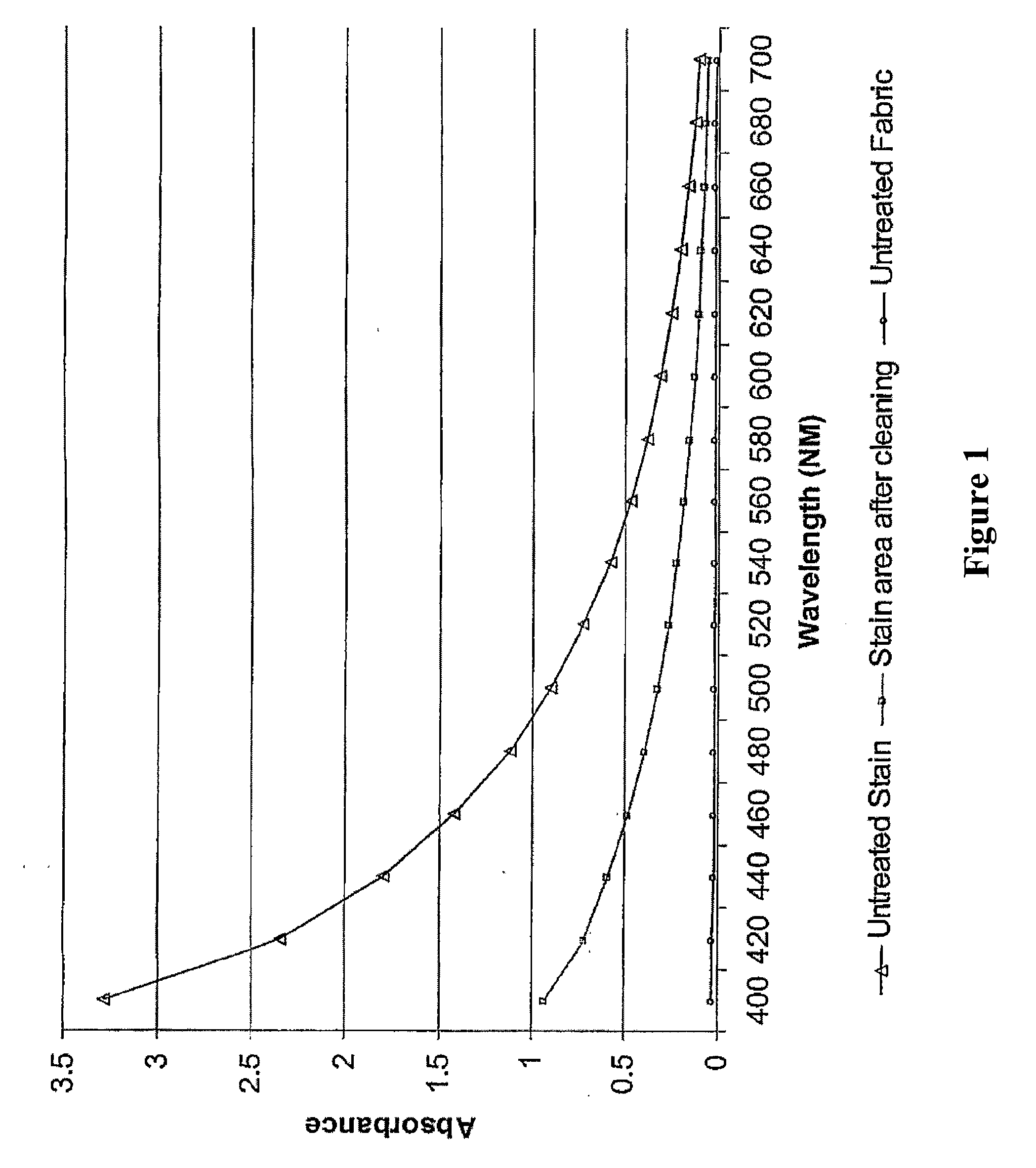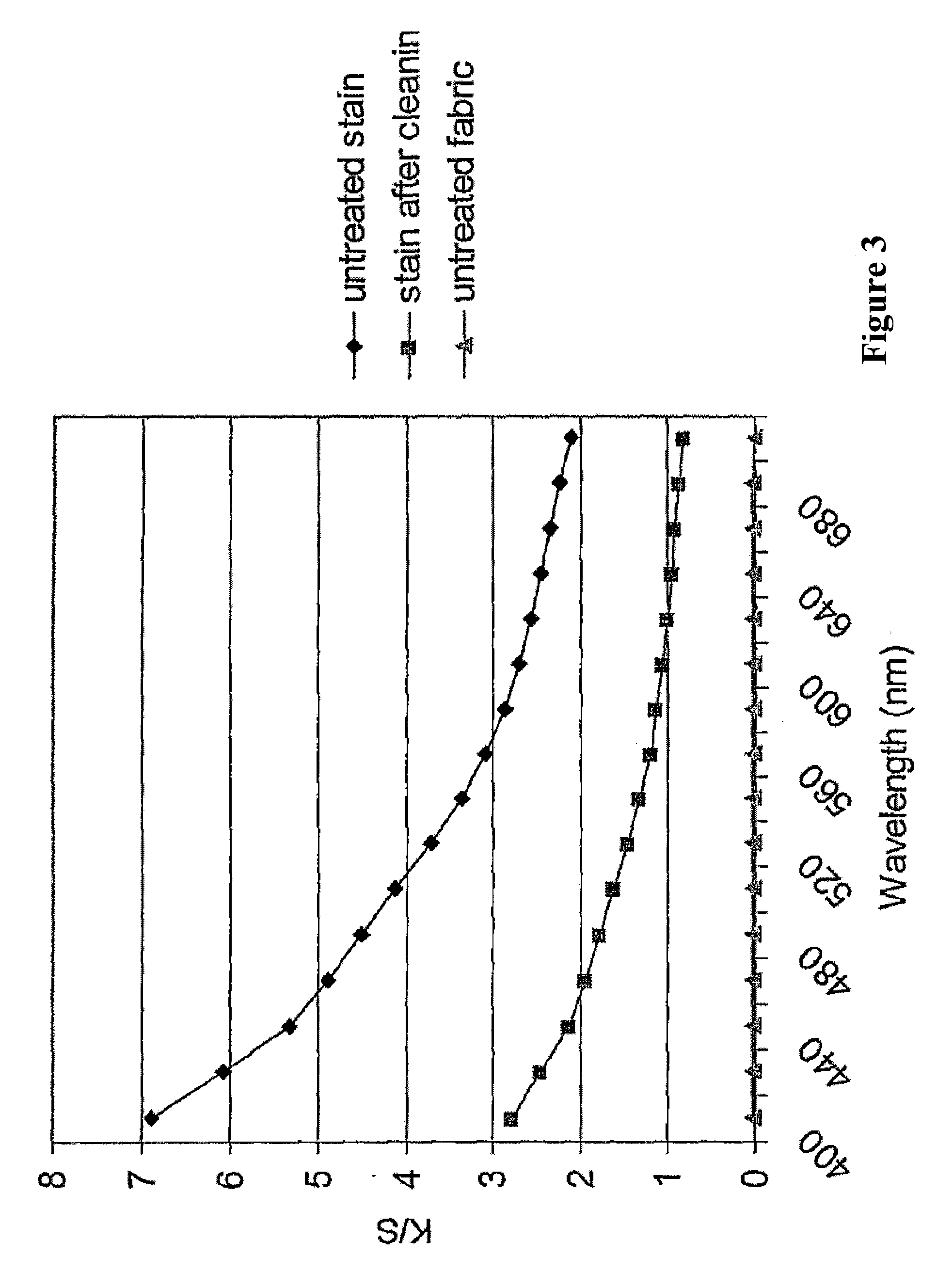Novel cleaning method
- Summary
- Abstract
- Description
- Claims
- Application Information
AI Technical Summary
Benefits of technology
Problems solved by technology
Method used
Image
Examples
example 1
[0023]The polymer particles comprised cylindrical nylon chips comprising Nylon 6,6 polymer having a molecular weight in the region of 15000-16000 Daltons, with average dimensions of 4 mm in length and 2-3 mm in diameter, and an average particle weight of 30-40 mg.
[0024]The fabric to be cleaned comprised soiled and stained Nylon 6,6 fibres, and the wetted dyed fabric was entered into the dry cleaning bath at 40° C. and the temperature was maintained at 40° C. for 10 minutes, then increased to 70° C. at a rate of 2° C. per minute, and then maintained at 70° C. for 20 minutes, after which time the fabric was removed, rinsed and dried. Complete removal of the soiling and staining was achieved.
example 2
[0025]The fabric to be cleaned comprised a soiled cloth of mercerised cotton stained with coffee in an aqueous transport medium, the cloth having an air dry mass of 5 g. This pre-soiled fabric sample was placed in a 2 litre sealed container with 75 g (air dry mass) of polymer particles comprising cylindrical chips of Nylon 6,6 polymer, with average dimensions of 4 mm in length and 4 mm in diameter. The pre-soiled fabric sample was wetted with tap water before commencement of cleaning to give a substrate to water ratio of 1:1. The sealed container was ‘tumbled’ / rotated for 30 minutes to a maximum of 70° C. with a cooling stage at the end of the cycle. Once cleaned, the fabric was removed from the sealed container and dried flat. The colour change to the stained area after cleaning was measured spectrophotometrically and is illustrated in FIG. 1, from which it is apparent that the degree of staining was very significantly reduced following the cleaning process.
example 3
[0026]The fabric to be cleaned comprised a soiled cloth of mercerised cotton stained with city street dirt in an aqueous transport medium, the cloth having an air dry mass of 5 g. This pre soiled fabric sample is placed in a 2 litre sealed container with 75 g (air dry mass) of polymer particles comprising cylindrical chips of Nylon 6,6 polymer, with average dimensions of 4 mm in length and 4 mm in diameter. The pre-soiled fabric sample was wetted with tap water before commencement of cleaning to give a substrate to water ratio of 1:2. The sealed container was ‘tumbled’ / rotated for 30 minutes to a maximum of 70° C. with a cooling stage at the end of the cycle. Once cleaned, the fabric was removed from the sealed container and dried flat. The degree of removal of particulate stain after cleaning was determined by microscopy and is illustrated in FIG. 2, from which it can be seen that a significant reduction in numbers of dirt particles was observed after the cleaning process had taken...
PUM
 Login to View More
Login to View More Abstract
Description
Claims
Application Information
 Login to View More
Login to View More - R&D
- Intellectual Property
- Life Sciences
- Materials
- Tech Scout
- Unparalleled Data Quality
- Higher Quality Content
- 60% Fewer Hallucinations
Browse by: Latest US Patents, China's latest patents, Technical Efficacy Thesaurus, Application Domain, Technology Topic, Popular Technical Reports.
© 2025 PatSnap. All rights reserved.Legal|Privacy policy|Modern Slavery Act Transparency Statement|Sitemap|About US| Contact US: help@patsnap.com



